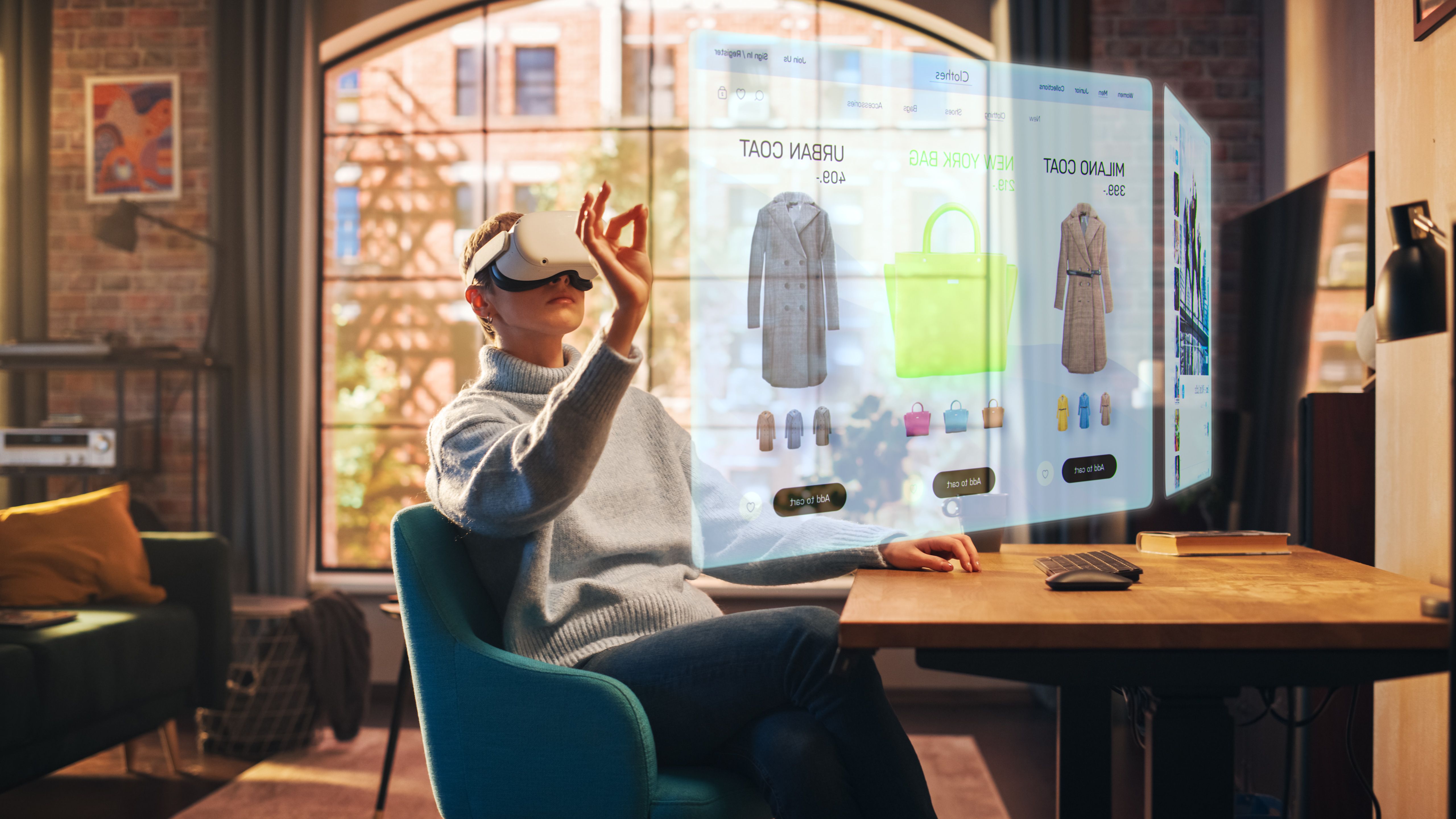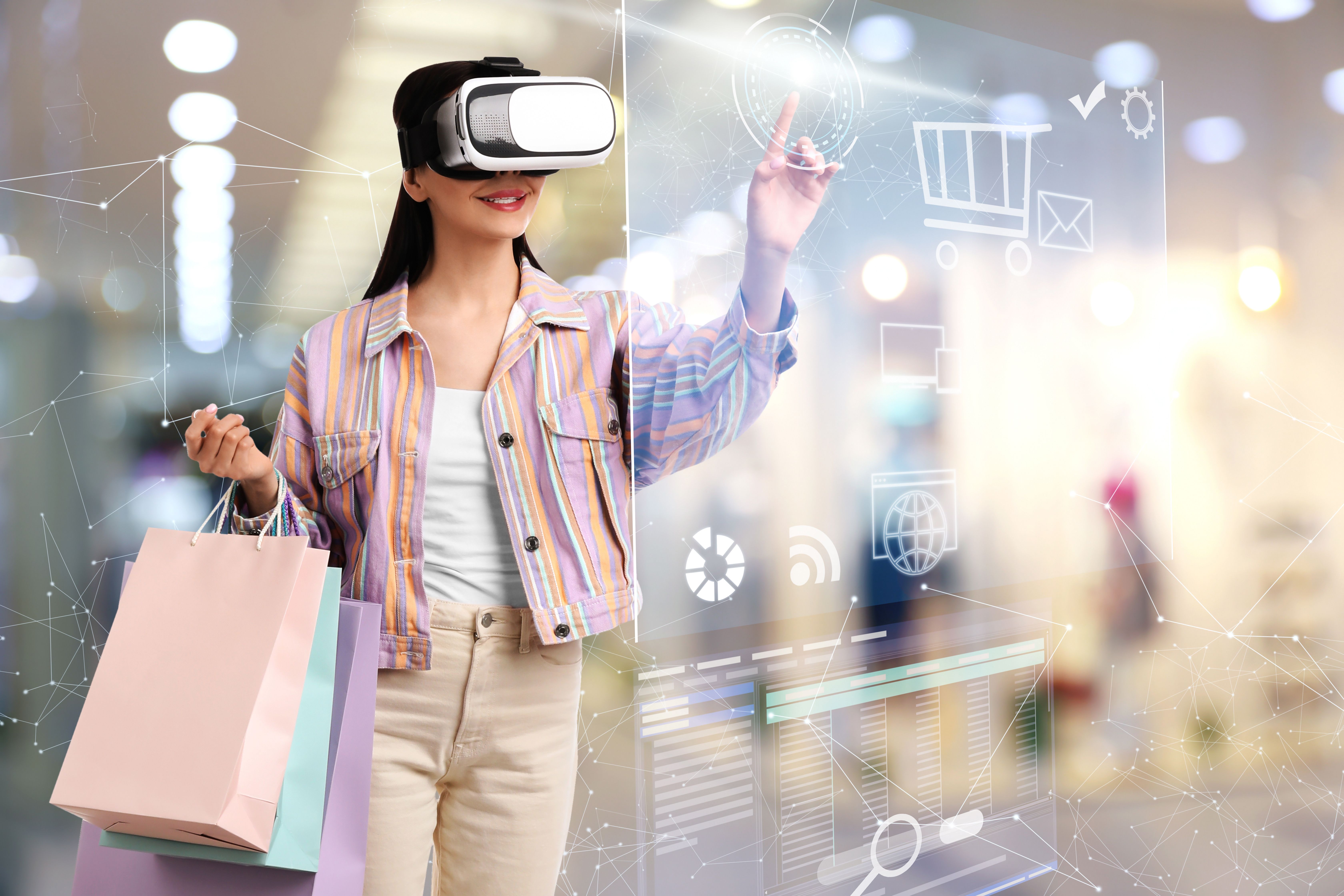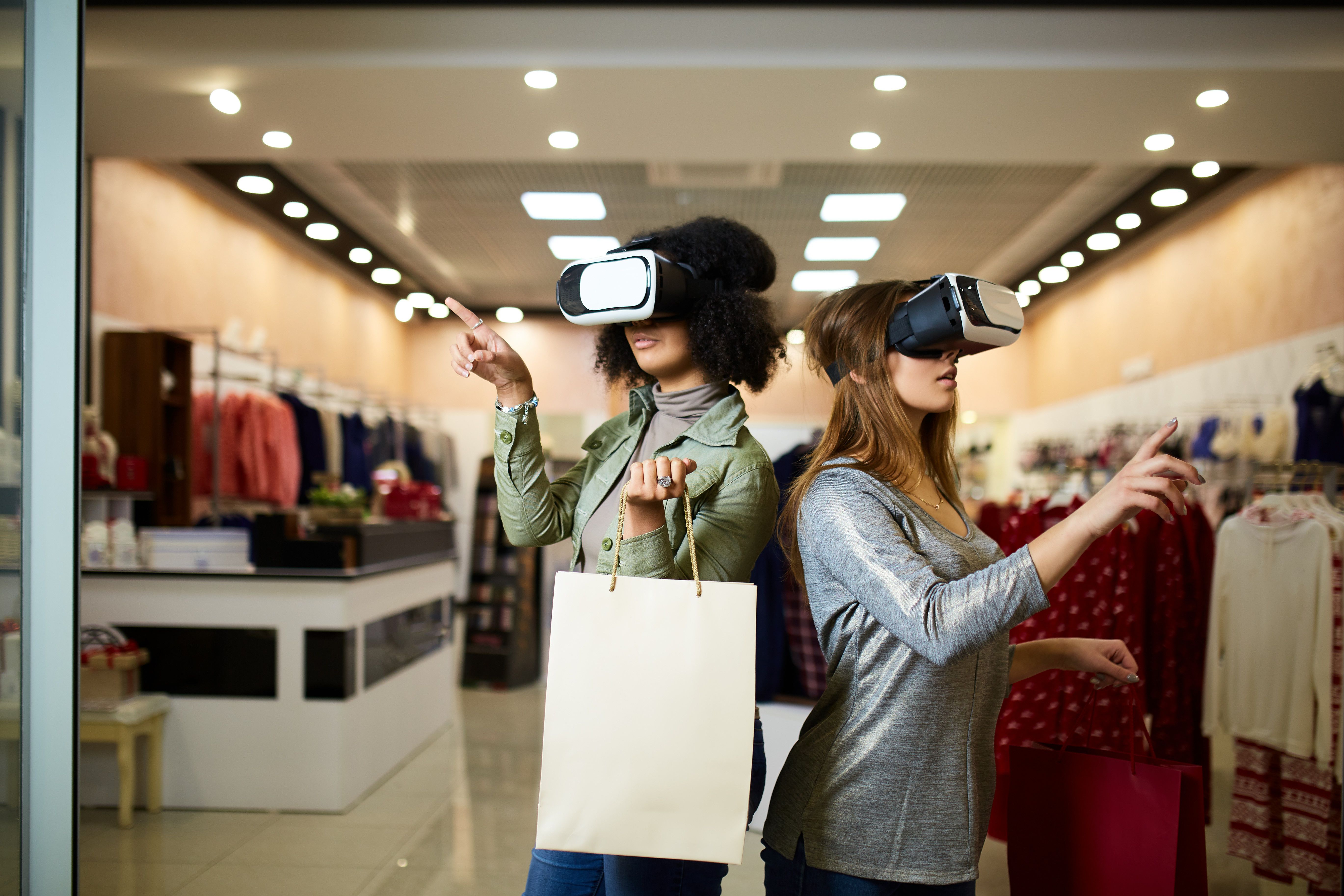Retail has come a long way in the past few years, with innovations like mobile payments and one-click buying. Now, shoppers are experiencing a new level of virtual reality: from personalized shopping recommendations tailored to their tastes to interactive product demos that allow them to get an up-close look at items before making a purchase. Shopping behavior is changing drastically as retailers embrace immersive technologies to drive engagement and sales. But how does this translate into an improved customer experience? In this blog post, we’ll discuss the ways virtual reality is transforming retail, why it matters for businesses and customers alike, and what you can do now to take advantage of these trends in your own shopping experiences.
An Overview of Virtual Reality in the Retail Industry
As technology progresses, it's no shock that virtual reality has been embraced by the retail sector.
VR allows retail customers to experience firsthand what a product looks and feels like without having to leave their homes. It's changing the way shoppers interact with brands by allowing them to fully customize their experiences based on their style and preference.
Not only is it making the shopping process more enjoyable, but it also helps retailers gain valuable insight into customer needs so they can continually improve their offerings. Whether it be clothes, furniture, or even groceries, Virtual reality has completely transformed the retail industry and will continue to further revolutionize it in the years ahead.
How VR is Changing the Shopping Experience
Shopping has now entered the realm of virtual reality, completely revolutionizing the retail industry. In the age of interactive technology, consumers are no longer limited to only window-shopping in stores or browsing through catalogs. Instead, they can enter virtual storefronts and interact with products as if they were handling them in person.
VR has become more than just a novelty. By simulating real-life shopping experiences it optimizes efficiency and cost-effectiveness for both vendors and customers alike. With its immersive environment, shoppers get to benefit from an engaging experience that allows them to make informed decisions from the comfort of their own homes.
Maximizing the Benefits of Virtual Reality for Retailers and Consumers
VR technology opens up new ways for customers and retailers to engage with one another, providing a dynamic experience for both parties involved. Here are some of the benefits of using virtual reality for consumers and retailers.
- Virtual Showrooms
Consumers can explore virtual showrooms and visualize products in a realistic way. This technology allows customers to view products in an immersive and interactive way as if they were physically in a store. Virtual showrooms provide consumers with a unique and engaging experience, ultimately resulting in increased customer satisfaction and sales.
For example, Vection Technologies INTEGRATEDXR can help retailers create virtual stores and showrooms, allowing customers to explore products and realistically visualize them. This gives customers a better sense of how products look and feel, encouraging them to make a purchase. - Personalized Shopping Experience Retailers can improve customer engagement and personalize the shopping experience by using virtual reality technology. VR technology allows retailers to engage with customers on a deeper level, offering customized and personalized options to fit each unique need. This not only builds brand loyalty but also saves consumers searching time while shopping.
- Immersive Experience Virtual reality gives customers a more immersive shopping experience, allowing them to interact with products in a more natural way. This interactive experience creates an unprecedented level of engagement and helps retailers to establish themselves as leaders in their respective markets. �
- Reduced Training Costs VR training simulators help employees to learn new skills and engage in mock scenarios, without requiring the use of physical products. This reduces training costs for retailers, as employees can be trained virtually in an interactive environment, providing a cost-effective and improved training experience.
- Engaging Marketing
Virtual reality allows retailers to create engaging and effective marketing campaigns. By utilizing this technology, retailers can create interactive campaigns that allow consumers to engage with products in unique and creative ways to promote sales and increase awareness of new products.
Virtual reality enables retailers to provide customers with a unique and engaging experience that is not available anywhere else, revolutionizing how retailers interact with customers in the competitive market of retail.
The Future of VR in Retail and What This Could Mean for Your Home Value
The possibilities of virtual reality (VR) for the retail industry are virtually endless; the opportunities to revolutionize home shopping experiences have never been greater. Imagine being able to shop for furniture from your living room and have it show up at your door in just a few days!
This type of convenience could easily mean an increase in property values over time, as homeowners would be able to purchase more goods than ever before from the comfort of their own homes.
It's also possible that certain features in a home, such as having enough space for a designated VR area or room, can give homeowners a leg up when it comes to selling their properties.
We may soon find ourselves competing with one another to create the most compelling shopping destinations within our own homes, enabled by this incredibly transformative technology.
Explore the Potential of Virtual Shopping with These Tips
Virtual reality technology offers a novel way for shoppers to engage with products, ultimately leading to a more personalized, interactive, and immersive shopping experience.
Here are some tips for using VR to enhance the shopping experience for your prospective leads and more loyal customers.
- Research Products To make the most of virtual shopping experiences, research your products and how you can use VR to offer them to your clients. Look beyond just product images and descriptions, and delve deeper into product specifications, features, and customer reviews. You can use virtual reality for doing this.
- Create Immersive Experiences To create an engaging exploratory experience, consider using virtual reality technology to create real-time scenes that allow customers to explore their options rather than simply view static products. This adds more depth and fun to the shopping experience, and you add perfection to your customer experience.
- Maximize Social Elements Maximize social connections for maximum engagement, encourage users to share cross-platform content with friends, and provide avenues for engagement both online and in physical stores. In addition to virtual reality, you can explore other XR technologies to become your shopping experience more social, like AR apps.
- Bridge the Online and Offline Worlds Integrated solutions for virtual shopping can bridge the gap between online and offline shopping experiences by offering features such as virtual try-on sessions, allowing customers to see how the product looks in real life.
- Choose a Reputable VR Company
Choose a reputable virtual reality company that has proven experience in creating innovative shopping experiences. This ensures the technology is up to date, tailored to specific needs, and scalable solutions that can integrate with existing systems.
Using virtual reality to shop is a relatively new concept. Employing these tips will lead shoppers down a path toward more innovative and enjoyable virtual shopping experiences. Focus on research, create engaging exploratory experiences, maximize social elements, and choose a reputable VR company to ensure success.
Choosing a company with a good reputation and experience, like Vection Technologies, is important for using virtual reality (VR) in stores and shopping.
Discover How to Bridge Physical and Digital Shopping Experience
In today's fast-paced world, shopping is no longer limited to traditional brick-and-mortar stores because of the advent of e-commerce. With that said, there are still advantages to shopping traditionally, including hands-on experiences and the personal touch of customer service.
However, digital shopping has its own unique benefits, such as a wide range of product selections and the convenience of buying from anywhere in the world regardless of the location of the store.
Here are some ways you can take advantage of both physical and digital shopping experiences.
- Promote Online Shopping and Pick Up In-Store This allows you to take advantage of digital convenience with in-store benefits, such as sample testing and try-on, and the ability to get personalized assistance from store clerks.
- Browse Digitally In-Store Create interactive digital catalogs available in their stores. This allows you to browse your inventory with clients while physically in the store, providing them with the opportunity to try items on or test the products before making a purchase.
- Utilize Special Delivery Options
As a business owner, it's important to consider the delivery options available to your customers. Taking advantage of digital and physical shopping experiences can expand the range of delivery offerings for your customers. Online shopping offers convenience in terms of having products delivered directly to your customer's doorsteps.
Meanwhile, offering expedited shipping or same-day delivery from brick-and-mortar stores allows customers to pick up their purchases quickly and conveniently at a physical location. Doing so will not only provide a more convenient experience for your customers but can also lead to higher customer satisfaction and long-term loyalty. - Use Online Deals to Your Advantage
Taking advantage of online deals and using digital coupons can help you maximize profits while providing your customers with more value. Digital shopping can provide exclusive discounts, allowing customers to benefit from savings that may not be available in physical stores.
Offering online deals such as discounts or promo codes can also help increase customer loyalty and satisfaction with your business. Furthermore, using digital coupons for in-store redemption helps create opportunities for additional sales effectively without having to increase prices. - Leverage Virtual Shopping
As a retailer, leveraging the convenience of virtual shopping can help create a better customer experience and drive more sales.
By incorporating virtual shopping into your business model, customers will be able to try on clothing virtually, explore the store from their own device, and get personalized suggestions tailored to their preferences.
This will not only save time and hassle for customers but also provide an enjoyable and convenient shopping experience that leads to higher customer satisfaction and loyalty.
Takeaway
In conclusion, virtual reality offers both retailers and consumers an entirely new experience and viewpoint when it comes to shopping.
For retailers, VR is a great way to connect with shoppers in surprising and innovative ways like never before. Consumers are thrilled to be able to explore and become fully immersed in a shopping experience that goes beyond traditional physical stores.
Experience the power of virtual shopping with INTEGRADEXR from Vection Technologies. Not only will you be able to create an enjoyable customer experience and increase customer loyalty, but you will also be able to drive more sales for your business.
Contact Vection Technologies today to learn more about how you can adopt INTEGRADEXR and make your retail business thrive!


